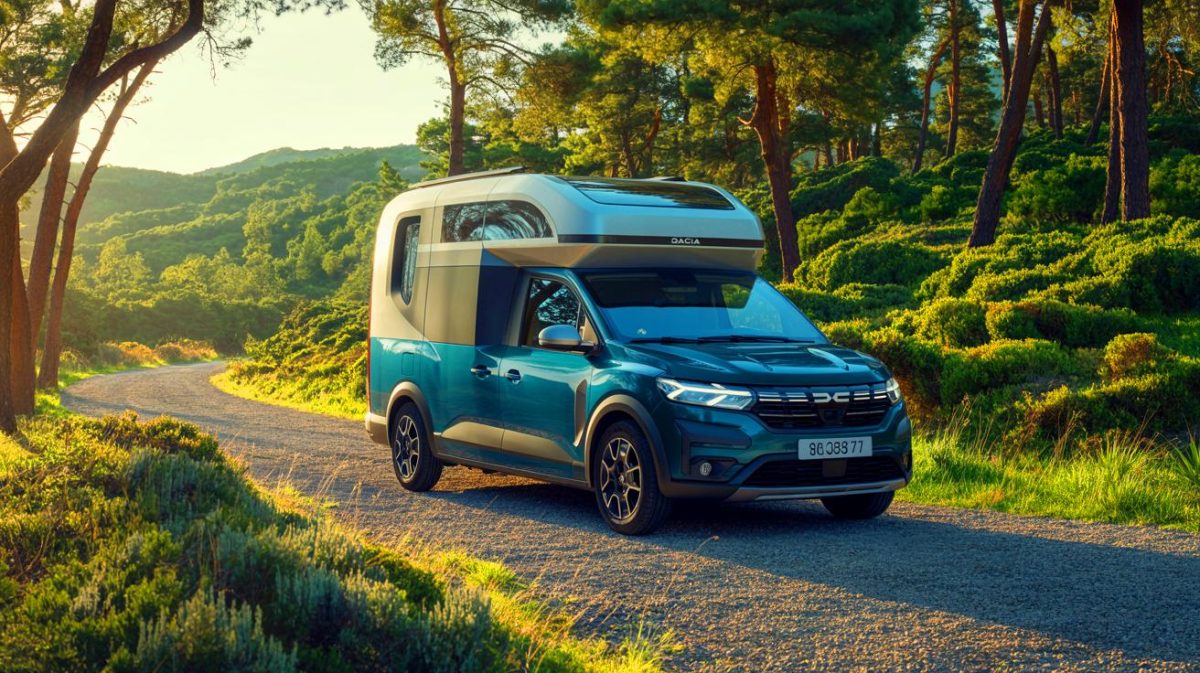A concept built for real adventures
The camper many dream of often comes with a painful price tag. Dacia’s latest concept dares to challenge that, promising freedom on four wheels without the premium. Inspired by the Sandman and envisioned with the help of artificial intelligence, it sketches a compelling path toward an accessible and practical vanlife.
This isn’t just about looks. The idea revolves around a vehicle designed to go where paved roads end. With all‑terrain tires, underbody protection, and a raised suspension, it targets families and explorers who want comfort on the highway and confidence on gravel, sand, or snow.
Rugged by nature, composed on the road
Dacia’s approach remains refreshingly pragmatic: keep it robust, keep it simple, and keep it affordable. The proposition is a van that’s easy to drive, easy to maintain, and ready for weekend surf trips or multi‑week Alpine loops, without the fuss of oversized RVs.
Expect suspension geometry tuned for stability and daily driving. The mission is not rock crawling, but balanced capability that widens your map without sacrificing day‑to‑day usability.
Design that blends grit and clarity
The exterior language is muscular yet clean, with a bold logo and a modern light signature. There are nods to American overlanding culture, but the stance and proportions stay unapologetically European—compact, efficient, and clever.
Protective cladding and practical roof rails hint at utility over ornament. It’s an honest aesthetic that prioritizes function while feeling contemporary and confident.
A smart interior with up to five berths
Inside, the rumor mill points to a spacious cabin with as many as five sleeping spaces, a compact kitchen, a bathroom module, and a sociable dinette. Think tiny home sensibility: fold, slide, rotate—every millimeter earns its keep.
Materials would likely favor durability and easy cleaning, with storage solutions for gear, groceries, and gadgets. The vision is a space that invites long stays and shared memories without feeling cramped.
“Good design isn’t about excess—it’s about making the most of what you truly need.”
Powertrain pragmatism: a Renault diesel at heart
On the technical front, a Renault diesel derived from the Trafic makes perfect sense for this mission. Expect dependable torque for mountain passes, frugal consumption on highways, and serviceability across Europe.
The emphasis is on reliability over flash. Whether paired with a manual or an automatic, the powertrain choice prioritizes range, payload, and longevity—key for cross‑border adventures.
Pricing that could disrupt the market
The headline figure is the projected price: around €55,000. If realized, this would put a new, warranty‑backed camper in direct contention with used alternatives, reshaping expectations for first‑time buyers.
At that level, it’s not just cheaper to buy—it could be cheaper to own. Lower insurance, accessible parts, and sensible fuel economy form a total‑cost‑of‑ownership story that appeals to value‑driven travelers.
The big idea, distilled
- Up to five berths without ballooning the footprint
- All‑terrain setup with protection and raised clearance
- Modular kitchen and convertible dining area
- Compact bathroom module for true autonomy
- Emphasis on practical storage and easy cleaning
- Core safety aids and modern connectivity
- A focus on serviceability and low running costs
Who it’s for
This concept speaks to first‑time camper buyers seeking a dependable entry point. It suits families who want flexible vacations, outdoor enthusiasts who chase weekends, and remote workers who crave quiet corners to log in.
If you value practicality over prestige, this formula feels right. It’s the everyday adventurer’s camper—capable, understated, and thoughtfully equipped.
From vision to showroom: hurdles ahead
Turning concept into reality is never trivial. Homologation, weight management, emissions targets, and supply‑chain stability all stand between sketches and keys in hand. Packaging a bathroom, five berths, and meaningful storage into a compact shell demands real engineering finesse.
Still, Dacia’s track record with no‑nonsense value suggests they can make tough trade‑offs wisely. Partnerships with component suppliers for camping modules could accelerate time‑to‑market and keep costs in check.
Why it matters for the RV industry
The motorhome sector has long equated capability with cost. A budget‑savvy camper that doesn’t feel compromised could push the industry toward simpler, repairable, right‑sized solutions. It also aligns with a broader shift: smarter packaging, less waste, and more people actually using their vans, not storing them.
If Dacia moves forward, competitors may have to rethink entry‑level strategies. The ultimate win is for travelers who want experiences, not burdens.
A promising path for accessible vanlife
Even on paper, this concept hits a sweet spot: honest capability, thoughtful packaging, and attainable pricing. If it reaches production with most of its promises intact, it could lower the barrier to wanderlust for thousands.
The message is clear: adventure shouldn’t be a luxury. It should be a well‑made, ingenious companion—one that lets you go further, pay less, and enjoy more.
